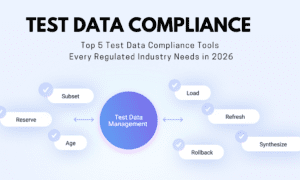In the rapidly evolving landscape of technology, the automobile industry stands at the forefront of innovation. Over the years, advancements in automobile technology have significantly transformed our lives, making transportation safer, more convenient, and efficient. With the rise of autonomous vehicles, electric cars, and various safety features, the impact on road safety has been substantial. However, as we embrace these advancements, it is crucial to recognize that progress often comes with unforeseen consequences. This article delves into the positive impact of automobile technology on road safety while also exploring the challenges and unexpected outcomes that have emerged.
Introduction
The Positive Impact of Automobile Technology on Road Safety
Advanced Driver-Assistance Systems (ADAS)
Advanced Driver-Assistance Systems (ADAS) have revolutionized road safety. These systems, including adaptive cruise control, lane-keeping assist, and automatic emergency braking, use sensors and cameras to enhance the driver’s awareness and response time. ADAS not only prevent accidents but also mitigate their severity, leading to a substantial reduction in road fatalities.
Vehicle-to-Infrastructure Communication
Modern cars equipped with Vehicle-to-Infrastructure (V2I) communication technology can communicate with traffic signals and other infrastructure elements. This connectivity enables real-time traffic updates, rerouting options, and optimized traffic flow, reducing congestion and the likelihood of accidents.
Electric and Hybrid Vehicles
The shift towards electric and hybrid vehicles has environmental benefits, but it also positively impacts road safety. Electric cars are quieter than traditional vehicles, reducing noise pollution and making urban areas safer for pedestrians and cyclists. Additionally, the torque delivery of electric vehicles offers rapid acceleration, enhancing the driver’s ability to respond swiftly to potential dangers.
Collision Avoidance Systems
Collision avoidance systems utilize sensors and algorithms to detect imminent collisions and take corrective actions. These systems can automatically steer the vehicle, apply brakes, or warn the driver, preventing accidents caused by factors such as distracted driving or sudden obstacles.
Autonomous Vehicles
Autonomous vehicles, though still in the experimental stage, hold the promise of revolutionizing road safety. By eliminating human error, which accounts for the majority of accidents, self-driving cars have the potential to create a future with significantly reduced road fatalities.
Unforeseen Consequences and Challenges
Cybersecurity Risks
As cars become more connected, the risk of cybersecurity threats increases. Hackers can potentially gain control over a vehicle’s systems, posing a significant danger to occupants. Ensuring robust cybersecurity measures is essential to safeguard both the vehicle and its passengers.
Job Displacement
The rise of autonomous vehicles could lead to job displacement for millions of individuals employed in the transportation industry. Truck drivers, taxi drivers, and delivery personnel might find their jobs at risk, necessitating comprehensive workforce retraining and support programs.
Ethical Dilemmas
Autonomous vehicles face ethical dilemmas when it comes to decision-making in potential accident scenarios. Programming vehicles to make split-second moral decisions raises complex questions that society must address, balancing utilitarianism and individual rights.
Infrastructure Challenges
The widespread adoption of autonomous and electric vehicles requires significant infrastructure upgrades, including robust charging networks and smart roads. Without adequate investment in infrastructure, the potential benefits of these technologies might be limited.
Data Privacy Concerns
Connected vehicles generate vast amounts of data, raising concerns about user privacy. Striking a balance between utilizing data for improving road safety and safeguarding individuals’ privacy rights is a challenge that regulators and technology developers must address.
Conclusion
The impact of automobile technology on road safety is undeniable, with advancements like ADAS, V2I communication, and autonomous vehicles saving lives and preventing accidents. However, addressing the challenges and unforeseen consequences, such as cybersecurity risks, job displacement, ethical dilemmas, infrastructure challenges, and data privacy concerns, is crucial to ensuring that the benefits of technology are maximized while minimizing potential drawbacks. As society continues to embrace innovation, it is imperative to prioritize safety, ethical considerations, and thoughtful planning to create a future where road travel is not only advanced but also secure for everyone.



































